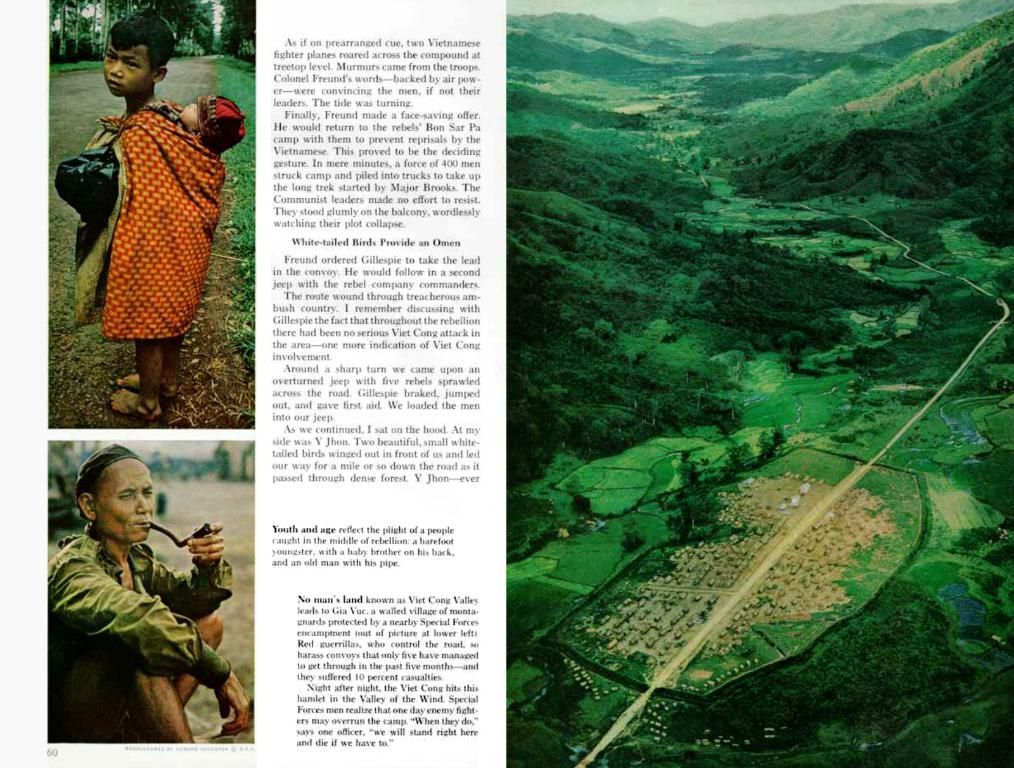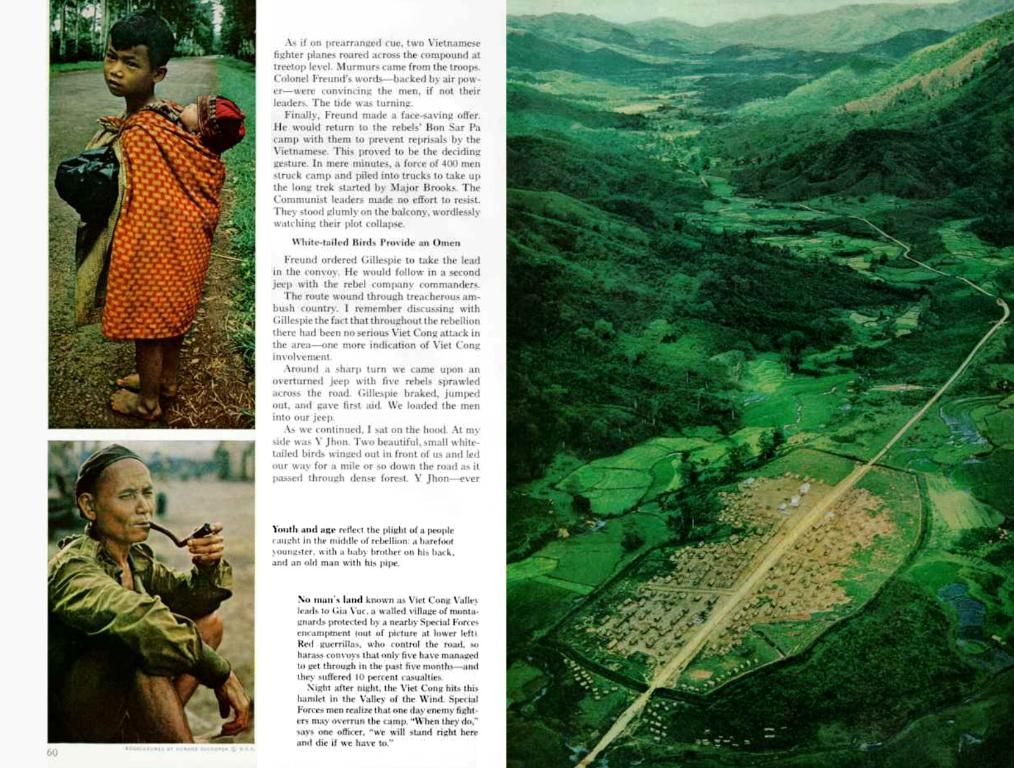Preparing for the Unforeseen: Civil Defense Drill in India Amidst Tensions
Life Adjustments: Examining Civilian Lifestyle Changes Due to War Preparations
Get ready, folks! India is about to embark on an extraordinary exercise tomorrow to prepare civilians and students for effective civil defense in the face of a potential hostile attack. This action comes as tensions between India and Pakistan reach an all-time high following the Pahalgam terror attack that claimed the lives of 26 innocent civilians.
Remember the last time such a drill was carried out? It was way back in 1971, during a period when India and Pakistan were at war, with Pakistan being divided into two, and Bangladesh being created. The armies of the two nations confronted each other once more in Kargil in 1999 and during Operation Parakram in 2001-2002, when India mobilized its troops toward the International Border and the Line of Control after the Parliament attack planned by terrorists operating from Pakistan.
Whenever the threat of war hangs heavy over a country, it's not just the military that feels the brunt, but also the civilians.
Want to know more about this security drill? Check out Civil Defense Drill Unfolds: The Secrets Behind Tomorrow's Security Exercise
Living Through the Drill
There's no need for haste when faced with an enemy attack. The Central government has devised measures for civil defense in India, detailing how people should respond to an attack. A 2003 document published by the Directorate General of Civil Defense outlines general principles of civil defense, a concept that originated in 1962 during the India-China war.
During the 1971 drill, civilians were taught to protect themselves from air raids, a threat that seemed imminent as, in 1965, Pakistan attacked Indian Forward Operating Bases (FOBs) such as Pathankot, Ambala, Agra, Adampur, and Halwara. People were trained to take shelter in bunkers, learn how to dig trenches, and find a fortified, secure location to shield themselves from enemy bombing.
Water, public health, sanitation, and essential services in areas close to conflict zones are at risk, especially during wartime. The document addresses the need to "Maintain or restore a safe water supply and temporary measures to render water safe for drinking purposes and other essential uses." The possibility of water shortages is high due to damage to supply lines and their use in firefighting operations.
"Adequate food inspection during an emergency, especially the inspection of emergency kitchens and canteens. Prevention of epidemics by mass inoculation."
During times of potential war, there may be traffic restrictions, with a ban on using lights in the evening. During the 1962 Indo-China war, 1965, and 1971 India-Pakistan war, significant cities such as Delhi, Mumbai, Kolkata, and Chennai, along with border cities, underwent complet blackouts.
Learn more about this here: In the Thick of It: Understanding the Security Drill and Preparing for Air Raids
The 2003 document offers guidelines for the proper use of lights on vehicles during the blackout. "All lights capable of throwing a beam, carried on a motor vehicle, shall be screened," it says and proposes three methods. The first method entails covering all lights with dry brown paper, one thickness on the lower half and two thicknesses on the upper half, resulting in only a faint light emitted from the lower part of the headlamp.
Before the advent of World War II, Britain began preparing civilians for war from the 1930s, as Hitler gained control of Germany. German bombing raids and the possible use of poisonous gas against civilians demanded mass distribution of gas masks.
Join the conversation about history by following #ThisDayinHistory. On September 7, 1940, the Blitz began in London. Read more
From September 1, 1939, 'Blackout' was enforced. Homeowners used curtains, cardboard, and paint to prevent light from escaping homes, offices, factories, or shops, risking punishment if they did not comply.
In Israel, the 1951 Civil Defense Law mandated the construction of bomb shelters in every home and apartment complex. For decades, Israelis have been trained to respond quickly to air raid sirens, just like they did during the Lebanon War of 1982.
In Ukraine, despite civil defense impacting daily life, access to healthcare, water, and other necessities, the Ukrainian government's digitization of public services ensures that authorities and providers of critical services can continue functioning adequately throughout the war. This has made it easier for people to access financial institutions such as banks and ATMs to purchase essentials and continues the provision of services like healthcare and education.
Even in Ukraine, a children's hospital in Kyiv was attacked by Russia.
Psychological Toll
Civil defense is basically citizens protecting citizens, but the threat of an attack takes a psychological toll on the population. During the 1971 war, Bombay was a key strategic and tactical target for Pakistan and the headquarters of the Western Naval Command.
Michael Patrao, a primary school student in 1971, wrote in an article for Deccan Herald, "There used to be mock drills at my school, St Anthony's High School, Santacruz, located not very far from the airport, a potential target. We were told to rush into the church when the siren (schoolbell) was sounded...On hearing the mock drill siren, we used to rush to the church."
Check out this incredible video of an air raid drill from Mumbai, with people getting off buses and covering their heads when an air raid siren was activated and seeking refuge in nearby structures.
M R Narayan Swamy, a veteran journalist, wrote, "In 1971, L-shaped trenches were dug outside our two-room government flats in Netaji Nagar, South Delhi, so that people could take shelter in the event of a Pakistani air attack."
The threat contributes to increased rates of anxiety and uncertainty. In Israel, at least two generations of citizens have grown up with war and taking shelter in bunkers. Even Palestinians, since 1948, have suffered the consequences of war, with at least 2,000 Gazans dying and likely being displaced due to Israel's operation to crush Hamas since 2023.
"One in five people living in active or recent war zones has depression, anxiety, post-traumatic stress disorder (PTSD), bipolar disorder, or schizophrenia. Trauma-induced mental health problems can even be passed down generations." - Council on Foreign Relations
A blackout drill was performed last Sunday in the cantonment area of Ferozepur, Punjab, reminding residents of the 1971 war when the district was under attack by Pakistan.
The security drill is scheduled across 244 civil defense districts, focusing chiefly on border districts and strategic locations. The aim of this drill is to prepare civilians to act swiftly and effectively during real emergencies.
- The preparation for a civil defense drill in India is happening amidst heightened tensions between India and Pakistan, following the Pahalgam terror attack.
- In the past, India has faced war-and-conflicts with Pakistan, such as the Kargil war in 1999 and Operation Parakram in 2001-2002, which were precipitated by terrorists' actions.
- Despite the military's role in wars, civilians also feel the brunt of the threat of war, and measures need to be taken to protect them, as seen in civil defense drills.
- During times of war or potential war, essential services like water, public health, and sanitation can be at risk, and it's crucial to maintain or restore a safe water supply and ensure adequate food inspection.
- Traffic restrictions and blackouts may also be implemented during periods of war, and guidelines for the proper use of lights on vehicles during blackouts need to be followed to avoid attracting attention.







![Direct Sale of Books: Perspectives from Over 500 Writers [2025 Edition]](/en/content/images/size/w1280/format/webp/20250730202215_authors-selling-books-directly.jpeg)
